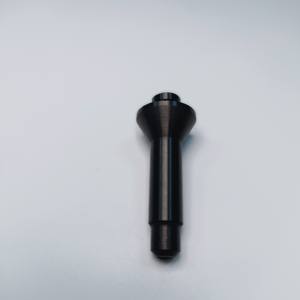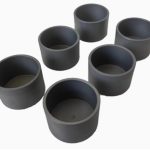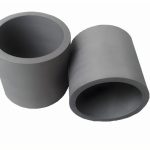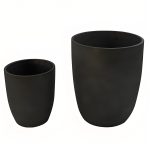Discover Premium Ceramic Products | Durability & Elegance United | Advanced Ceramics
PRODUCT PARAMETERS
Description
Overview of Silicon Carbide Crucible
Silicon Carbide (SiC) crucible is a container designed for high temperature applications and is widely used in material processing, metallurgy, semiconductor manufacturing, and laboratory research.
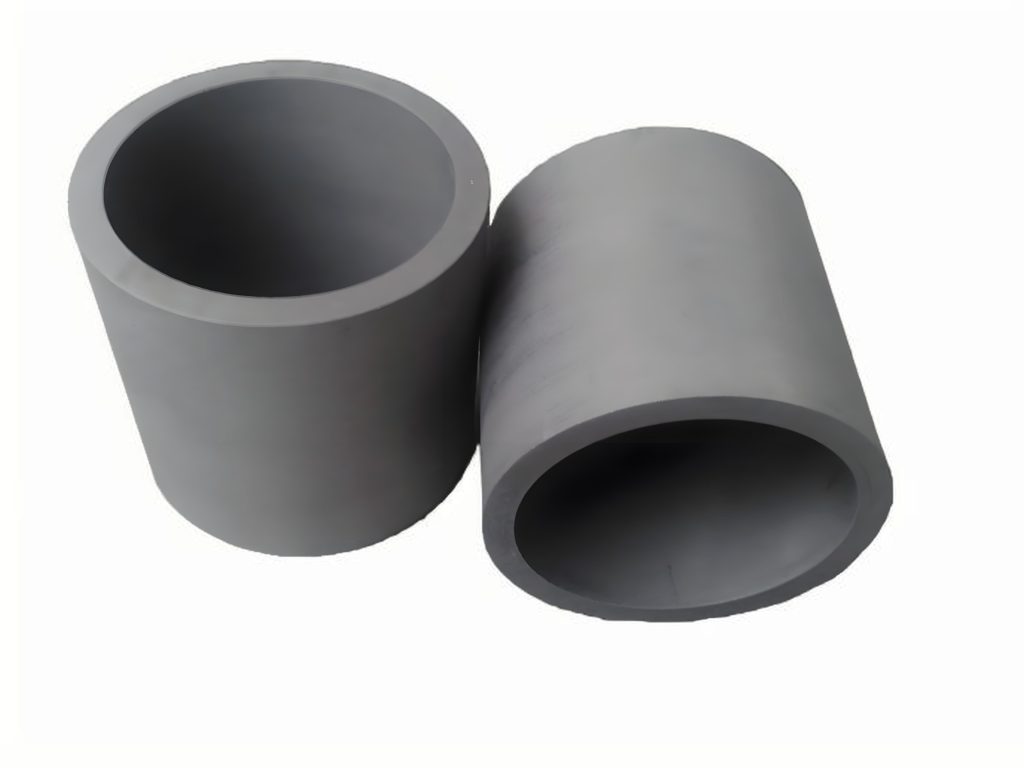
Silicon Carbide Crucible
Features of Silicon Carbide Crucible
1. High – Temperature Resistance
Silicon carbide crucibles have excellent high-temperature resistance. They can withstand extremely high temperatures, usually up to about 1400 – 1800°C. This property makes them ideal for use in applications such as melting metals like gold, silver, copper, and various alloys. In a foundry, for example, when melting bronze to cast sculptures or industrial components, the silicon carbide crucible can endure the high-temperature molten metal without deforming or breaking, ensuring the smooth progress of the melting process.
2. Good Thermal Conductivity
These crucibles have good thermal conductivity. Heat can be evenly distributed throughout the crucible, which is crucial for processes such as metal melting and ceramic sintering. When melting a metal, the efficient transfer of heat helps to ensure that the metal melts uniformly. In a laboratory setting, for example, when using a silicon carbide crucible to heat a chemical sample, the sample is heated more evenly, reducing the risk of local overheating and improving the accuracy of the experiment.
3. Chemical Resistance
Silicon carbide crucibles exhibit strong chemical resistance. They are resistant to a wide range of acids, alkalis, and other chemicals. This property allows them to be used in various chemical reactions and material processing. For example, in the chemical industry, when handling corrosive substances such as sulfuric acid or sodium hydroxide, the silicon carbide crucible can maintain its integrity and not react with the chemicals, enabling it to be used for heating, evaporation or other processes involving these substances.
4. Low Thermal Expansion Coefficient
With a low thermal expansion coefficient, silicon carbide crucibles maintain their shape and integrity during heating and cooling cycles. Even when subjected to rapid temperature changes, such as in a furnace where the temperature is adjusted frequently, the crucible’s dimensions do not change significantly. This stability helps to prevent cracking or warping, which is especially important in applications where precision and durability are required.
5. High Mechanical Strength
The crucibles have high mechanical strength. They can withstand mechanical stress, such as the weight of the material being processed (e.g., a heavy load of molten metal) and external forces during handling and transportation. Their strength also helps to resist impacts and abrasions. For example, in a busy industrial environment where crucibles may be moved around or bumped, the silicon carbide crucible’s strength can prevent it from easily breaking or getting damaged.
6. Long Service Life
Due to their combination of high-temperature resistance, chemical resistance, and mechanical strength, silicon carbide crucibles generally have a long service life. Compared to other materials, such as clay or graphite crucibles, silicon carbide crucibles can be reused many times without significant degradation in performance. This not only reduces the cost of replacement but also saves resources and is more environmentally friendly.
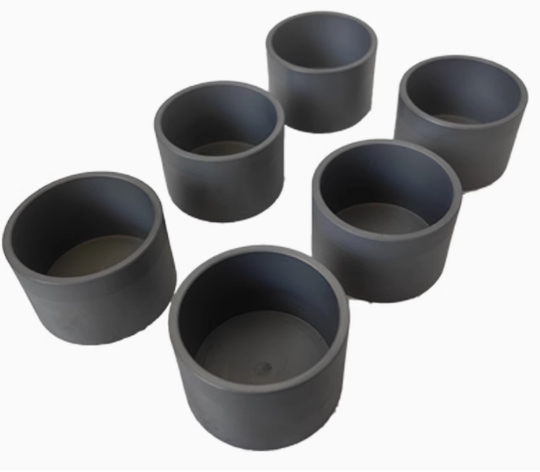
Silicon Carbide Crucible
Specifications of Silicon Carbide Crucible
| Specification | Description |
| Material | High-purity silicon carbide (SiC) |
| Crystal Structure | Polycrystalline (common types: 4H-SiC, 6H-SiC) |
| Density | ~3.2 g/cm³ |
| Maximum Operating Temperature | Up to 2200°C (depending on grade and application) |
| Thermal Conductivity | 90-150 W/m·K at room temperature |
| Coefficient of Thermal Expansion | 4.7 x 10⁻⁶ /°C (room temperature to 1000°C) |
| Young’s Modulus | 400-450 GPa |
| Hardness (Vickers) | ~25 GPa |
| Flexural Strength | 400-700 MPa at room temperature |
| Compressive Strength | 3000-4000 MPa |
| Oxidation Resistance | Excellent up to 2000°C in air; minimal oxidation at higher temperatures |
| Chemical Stability | Resistant to most acids, bases, and molten metals |
| Thermal Shock Resistance | Excellent, capable of withstanding rapid temperature changes |
| Surface Finish | Smooth, can be polished to mirror finish if required |
| Typical Dimensions | Customizable; common sizes range from small laboratory crucibles to large industrial crucibles (e.g., 50 mm to 500 mm diameter) |
| Weight | Varies based on size and thickness; lighter than many metal alternatives |
| Purity | >98% SiC, with controlled impurities for specific applications |
| Application | Semiconductor manufacturing, metallurgy, laboratory research, glass and ceramic industries |
| Manufacturing Process | Pressureless sintering, reaction bonding, hot pressing, or CVD (Chemical Vapor Deposition) |
| Color | Typically gray or black, depending on the manufacturing process |
| Standard Shapes | Cylindrical, conical, boat-shaped, custom designs available |
| Tolerance | ±0.1 mm to ±0.5 mm (depending on size and complexity) |
| Service Life | Long-lasting, with proper handling and maintenance |
Notes:
Customization: Many manufacturers offer custom-made SiC crucibles tailored to specific dimensions, shapes, and performance requirements.
Temperature Limitations: The maximum operating temperature can vary based on the specific type of SiC used and the intended application. For example, some high-grade SiC crucibles can withstand temperatures up to 2400°C in inert atmospheres.
Surface Treatment: Additional surface treatments, such as coatings or polishing, can enhance certain properties like chemical resistance or thermal shock resistance.
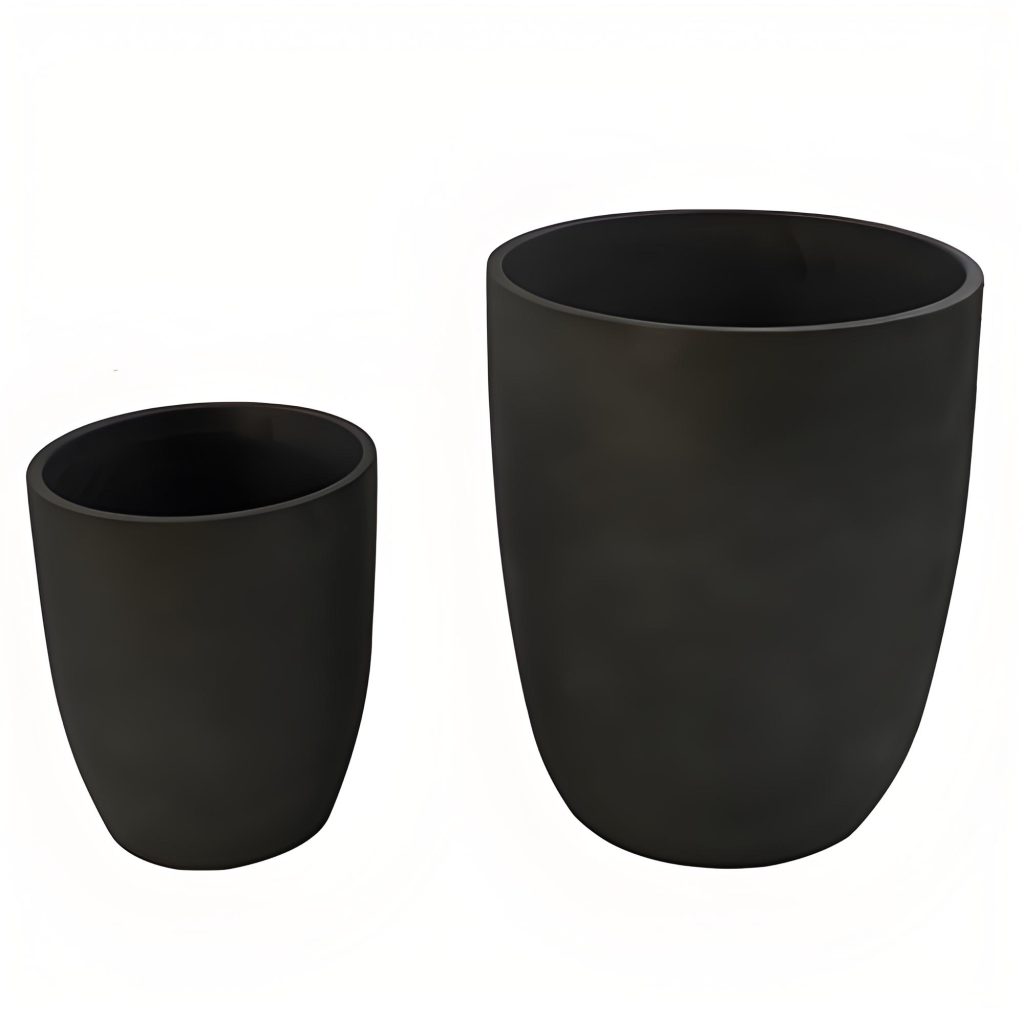
Silicon Carbide Crucible
Applications of Silicon Carbide Crucible
Silicon carbide crucibles are widely used in various industrial applications due to their unique properties such as high temperature resistance, good thermal stability, high mechanical strength, and excellent corrosion resistance. Here are some of the key applications of silicon carbide crucibles:
Metal Melting and Casting:
Silicon carbide crucibles are commonly used in the melting and casting of metals such as aluminum, copper, zinc, and lead.
Their high temperature resistance and mechanical strength make them suitable for these demanding applications.
High-Temperature Experiments:
Due to their ability to withstand extremely high temperatures, silicon carbide crucibles are often used in high-temperature experimental setups.
This includes research in materials science, chemistry, and physics where high-temperature reactions and processes are studied.
Glass and Ceramic Production:
Silicon carbide crucibles are also used in the production of glass and ceramics.
Their resistance to chemical corrosion and high temperatures makes them ideal for melting raw materials and shaping finished products.
Semiconductor Manufacturing:
Silicon carbide crucibles play a role in the manufacturing of semiconductors and other electronic components.
Their purity and ability to withstand high temperatures are crucial for the precise control of chemical reactions and material properties during production.
Furnace Applications:
Silicon carbide crucibles are used in furnaces for various applications such as heat treatment, sintering, and annealing.
Their durability and ability to maintain consistent temperatures make them suitable for these processes.
Energy and Environmental Applications:
Silicon carbide crucibles are also used in energy and environmental applications such as solar cell manufacturing and waste incineration.
Their high temperature resistance and corrosion resistance make them suitable for these demanding environments.
In summary, silicon carbide crucibles have a wide range of applications due to their unique combination of properties. They are essential tools in many industrial sectors, including metals, glass and ceramics, semiconductors, furnaces, and energy and environmental applications.
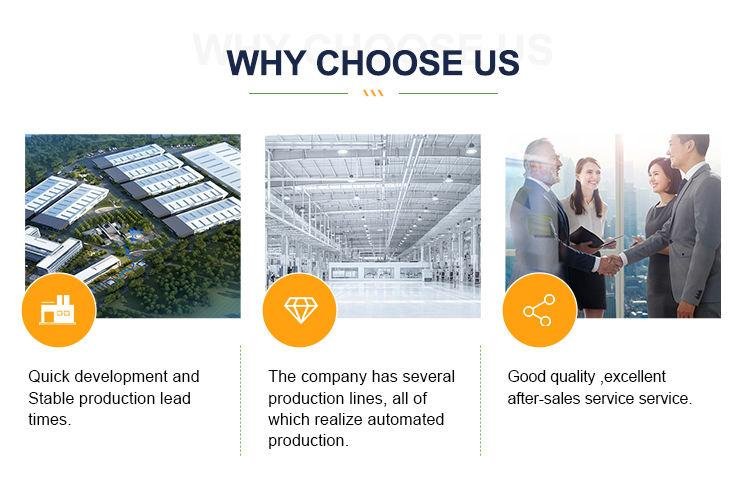
Company Profile
Advanced Ceramics founded on October 17, 2014, is a high-tech enterprise committed to the research and development, production, processing, sales and technical services of ceramic relative materials and products.. Since its establishment in 2014, the company has been committed to providing customers with the best products and services, and has become a leader in the industry through continuous technological innovation and strict quality management.
Our products includes but not limited to Silicon carbide ceramic products, Boron Carbide Ceramic Products, Boron Nitride Ceramic Products, Silicon Carbide Ceramic Products, Silicon Nitride Ceramic Products, Zirconium Dioxide Ceramic Products, Quartz Products, etc. Please feel free to contact us.(nanotrun@yahoo.com)
Payment Methods
T/T, Western Union, Paypal, Credit Card etc.
Shipment Methods
By air, by sea, by express, as customers request.

FAQs of Silicon Carbide Crucible
1. What materials can a silicon carbide crucible be used to melt?
A: Silicon carbide crucibles can be used to melt a wide range of materials. They are excellent for melting metals such as gold, silver, copper, aluminum, and their alloys. In addition to metals, they can also handle some high-melting-point non-metallic materials like certain ceramics and glasses during the sintering or melting process. However, when melting some reactive metals like titanium, special precautions may be needed due to the potential for chemical reactions with the crucible material at high temperatures.
2. How do you clean a silicon carbide crucible?
For light soiling, you can use a soft-bristled brush to remove loose debris gently. For more stubborn residues, a mild abrasive cleaner or a chemical solvent that is compatible with silicon carbide can be used. For example, if there is metal residue from a previous melting operation, a dilute acid solution (if the metal allows) can be used to dissolve the residue. After cleaning, it’s essential to rinse the crucible thoroughly with clean water and allow it to dry completely before the next use.
3. What is the maximum temperature a silicon carbide crucible can withstand?
A: Generally, silicon carbide crucibles can withstand temperatures between 1400 – 1800°C. However, the actual maximum temperature can vary depending on the quality of the crucible, its manufacturing process, and the specific application conditions. In some cases, with high-quality crucibles and under carefully controlled conditions, they may be able to handle slightly higher temperatures for short periods.
4. Can a silicon carbide crucible be used in an induction furnace?
A: Yes, silicon carbide crucibles can be used in induction furnaces. Their good electrical conductivity (at high frequencies) allows them to work well in induction heating systems. The magnetic field generated in the induction furnace induces eddy currents in the crucible, which in turn generates heat. This makes them a suitable choice for melting metals and other materials in an induction heating setup.
5. How long does a silicon carbide crucible last?
A: The lifespan of a silicon carbide crucible depends on several factors. The frequency and intensity of use, the types of materials being melted or processed, and the operating conditions (such as temperature changes and mechanical stresses) all play a role. Under normal industrial melting conditions, with proper care and maintenance, a silicon carbide crucible can last for several months to a few years. For example, in a small-scale jewelry-making workshop where the crucible is used less frequently to A: melt precious metals, it may last for several years. In a high-volume metal-casting factory, the lifespan may be shorter due to more frequent use and harsher conditions.
6. Are silicon carbide crucibles brittle?
A: Silicon carbide crucibles have a certain degree of brittleness. Although they have high mechanical strength, they can break if subjected to sudden and severe mechanical impacts such as being dropped from a height or hit with a hard object. However, compared to some other brittle materials like glass, they have better resistance to thermal shock and mechanical stress due to their good thermal and mechanical properties.
7. Can silicon carbide crucibles be used for chemical reactions other than melting?
A: Absolutely. Silicon carbide crucibles can be used for a variety of chemical reactions, such as evaporation, distillation, and solid-state reactions. Their chemical resistance makes them suitable for handling corrosive chemicals during these reactions. For example, in a laboratory, a silicon carbide crucible can be used to evaporate a solution containing hydrochloric acid to obtain a solid residue without the crucible being damaged by the acid.
REQUEST A QUOTE
RELATED PRODUCTS
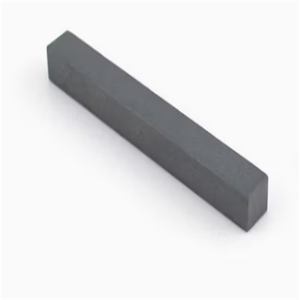
Refractory RSiC Kiln Shelves Recrystallized Silicon Carbide Ceramic Setter Plate
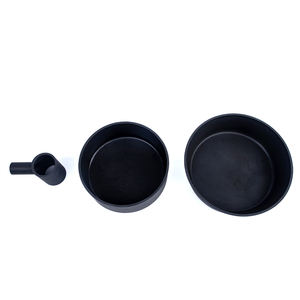
Clay Bonded Silicon Carbide (sic) Ceramic Tube
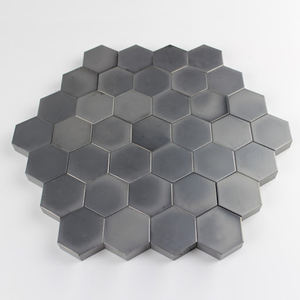
Acid Resistant Silicon Carbide Ceramic Microfiltration Membrane
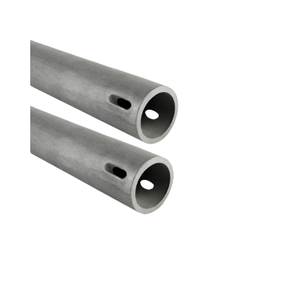
Multicurved Alumina Plate Silicon Carbide Plate Ceramic STA Armor Plate Tactical Hard Panel Strike Face
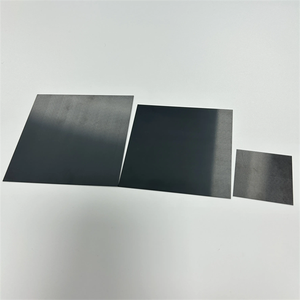
Protect U Factory Customization Silicon Carbide Ceramic Tile/Hexagon Ssic Ceramic Plate for Armor Plate
